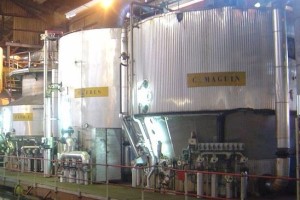 The refinement of sugar cane or sugar beets into usable sugar results in the creation of molasses (sometimes “black treacle”) and magma, highly viscous byproducts that are sometimes used as ingredients in baking and cooking.
The refinement of sugar cane or sugar beets into usable sugar results in the creation of molasses (sometimes “black treacle”) and magma, highly viscous byproducts that are sometimes used as ingredients in baking and cooking.
As with all food processing applications, accurate level and temperature sensing are necessary to prevent contamination and ensure the easy operation of vats, pumps, and other equipment. Because of the uniquely thick, sticky nature of molasses along with the fact that it needs to be constantly stirred in order to prevent congealing, sugar refineries face unique challenges when it comes to the level and temperature sensing.
Ultrasonic Level Sensors: The Ideal Choice
Traditional float switches and other contact level sensors aren’t appropriate to deal with something with the viscosity of molasses, so non-contact sensors are required. This is where components like SMD Fluid Controls’ ultrasonic liquid level sensors are at their most useful. Ultrasonic liquid level sensors work by sending high-frequency bursts of sound at the medium being measured. The sensor then records the time elapsed between the initial burst and the returning echo and calculates levels using the speed of sound. Optical level sensors may also be appropriate in some cases.
It’s important to note, however, that ultrasonic level sensors must be used in appropriate vessels: too-narrow tanks will not properly return the sound echo, and too-large vessels will result in sound dispersal that affects accuracy. For temperature sensing of molasses, magma, and other materials present in sugar refineries, customized thermowell sensors are a good choice.





